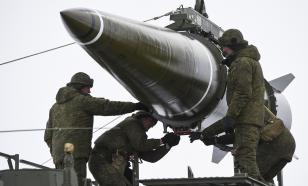British pound sterling: Strong, devoted, pompous
The United Kingdom of Great Britain, in spite of active participation in the world events, never abandoned their traditions. England is still dominated by the dark castles of rich nobles, cabs are seen on the streets of Albion, and Queen Elizabeth, following the tradition, has her five o'clock tea. The UK markets are dominated by the pound.

There is much guesswork around the national currency of England, Scotland, Wales and Northern Ireland. The first hypothesis of historians is, of course, directly connected with the weight of the coin. It is believed that "sterling pound" literally translates as "pound of pure silver." Proponents of this theory talk about the ancient English coin that was minted in silver and was called "sterling." 240 pieces of coins weighed one pound - that's the answer to the puzzle.
But historians and numismatists are not satisfied by such an obvious explanation. Scholars from Oxford got to work, which resulted in a new hypothesis that appeared in the Oxford dictionary published in 1955. The book claims that the British currency takes its name from year 1300. Supposedly, at the time people used Norman fine silver coins, depicting something that looked like a star and was called steorling in Old English.
Another theory, leading among others, tells the story of the silver coins from special alloy called "Easterling Silver" ("silver of the eastern lands"). It is believed that in the 12th century, this alloy was chosen by the practical people of Germany to manufacture coins. They decided that silver was certainly a precious metal, but fairly soft and short-lived. Coins from the unusual alloy were brought to England by traders from the eastern lands. In turn, the crowned ruler of England Henry II saw a wonderful peculiarity of the foreign coins and decided that from 1158 all the coins in the kingdom will be made of the exactly same metal. Time had passed, the English language was simplified, and the name was reduced to "Sterling Silver", vaguely reminiscent of today's compound name of the British currency.
The name "sterling pound" was assigned to the currency of England in 1694. For the first time a completely new rustle of banknotes was added to the sound of Sterling coins. The first pound coin appeared two centuries earlier, in 1489. Gold coins were cast from the highest standard gold, so their face value was far less valuable than the true value. However, the golden age of the English money did not last long, since the production of such coins has generated inflation in the country. As a result, in 1560, Queen Elizabeth implemented the first price reform, when the old coins were withdrawn from circulation.
Incidentally, the British currency was called differently in different areas. In the areas adjacent to the stock exchange, it was called "sterling", but unofficially the British currency was called "pound". The English language commonly uses even more simplified "ster" or "stg", and also commonly used slang "quid."
The residents of the kingdom at various times called their currency differently. For example, under George I the pound was called "wheel carts," and under Jacob VI - a hat. The strange names of the money came from its appearance. Accordingly, the images on the coins were changed frequently. At another time the residents of the kingdom called the money by names of the money engravers. Pound was once named "Simon", "Taner", "Bob" and "Joey."
Incidentally, the first monetary system, which was introduced along with the pound sterling, was extremely complex and intricate. A pound consisted of 12 shillings, of which there were 20 pence, and they, in turn, consisted of two forints. Obviously, this system was invented not for mere mortals, but for very savvy British.
Today, the British monetary system is greatly simplified: one pound is divided into 100 pence. The English currency is a reserve one, and despite the fact that the UK is a member of the European Union, the pound sterling is stubbornly unwilling to yield its rightful place in the country to the young participants of the currency market - the euro. The issue of sterling is handled by different banks scattered throughout the United Kingdom, and each of them has the right to issue banknotes with its own individual design. Meanwhile, the monetary policy of the country is monitored by the Bank of England that has the power to vary the inflation pressure of pounds in circulation.
Over many years, the pound has not been shattered, and it is relatively stable despite the financial crises that shake Europe and the UK. Pound Sterling is a chief guardian of the economy of the United Kingdom, albeit pompous and partly reserved. England's people are most loyal and devoted to their roots and history. After all, even during the craze around the young, brilliant euro, the Old World had not sold its own currency and a large part of the population voted in favor of the good old pound.
Maria Snytkova.
Subscribe to Pravda.Ru Telegram channel, Facebook, RSS!


